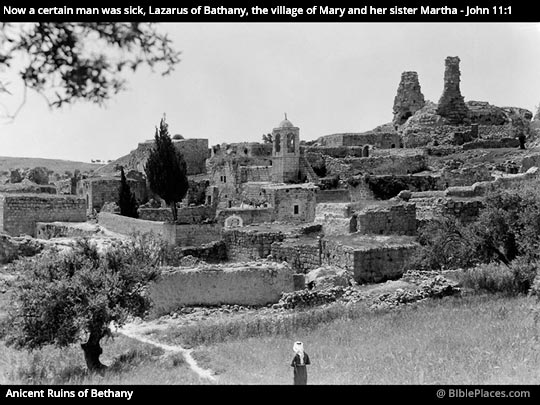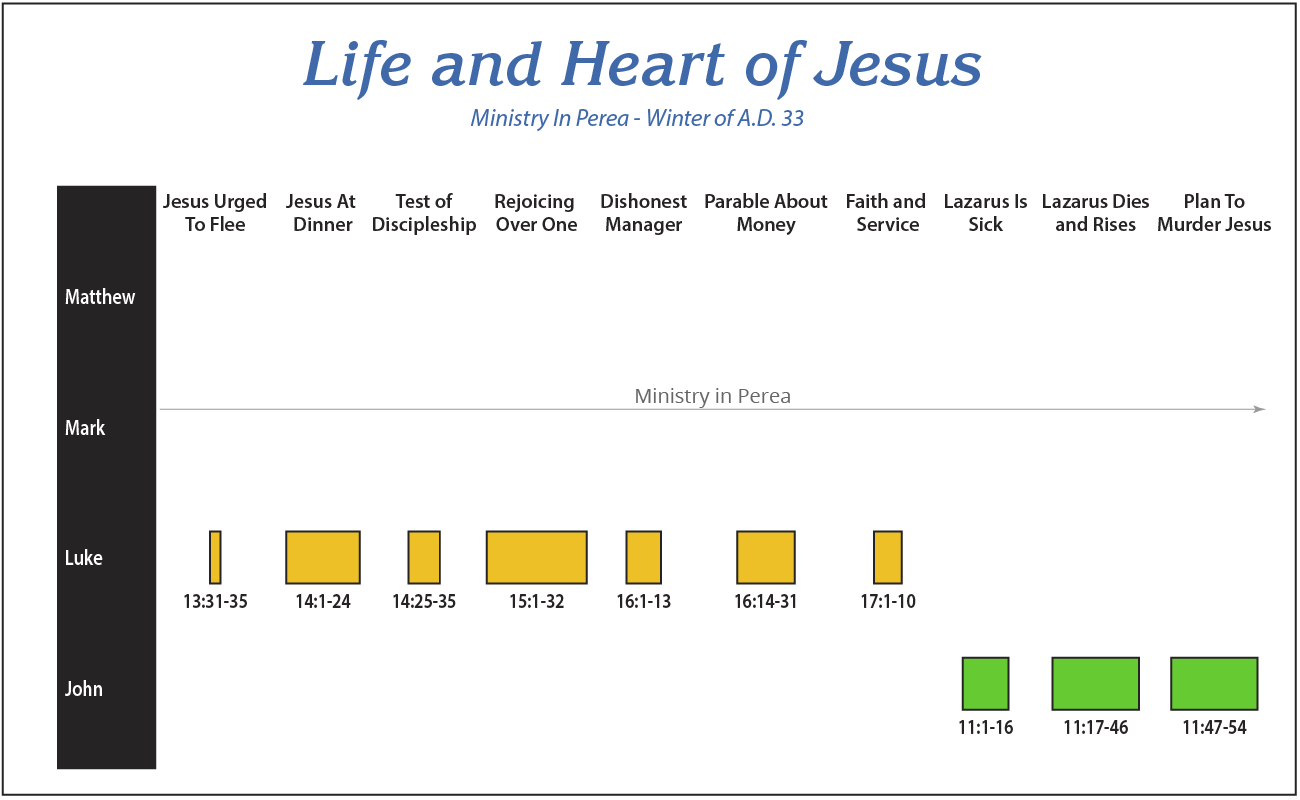
Sickness and death are frequent events in life. It is the rare person who is not sick at least one time each year. When we have a sore throat or the flu, we rarely plead for God to heal us, because such illness is so common and experience has revealed that eventually we will recover and resume a “normal life.” But when something more serious happens, such as a broken leg, an automobile accident, appendicitis attack, heart attack, pneumonia, or perhaps a malignant cancer, we ask God for help! Life threatening diseases and major surgeries motivate us to ask our church, friends, family members, and our pastor to pray for healing. Our gracious God in His mercy often heals. Usually, He allows us to suffer for a while. Sometimes He does not heal. Eventually, it will be God’s will for us to die when we reach the limit of the days that God gave us (Job 14:5). Psalm 116:15 reminds us that the death of His godly ones is precious in God’s sight. Our study is not about someone dying and going to heaven. It is about a man called Lazarus who suffered through a sickness, eventually died and then returned to life. We will discover why Christ allowed him to die and then resurrected him. Turn to John 11:1-16.
News From Jerusalem—Lazarus Is Sick
Our last study was from Luke 17:7-10 and the title was, “Jesus’ Definition of Humility.” Jesus was still in the region that was called Perea, which was on the east side of the Jordan River opposite the Dead Sea. Since we are following the life of Christ in chronological order, it is important to notice that John 11:1 describes the next event in His life. We will return to the gospel of Luke and remain there until Luke 19:28.Then Jesus will return to Jerusalem in John 11:55.
Therefore, our study starts with John 11:1, and the verse tells us that Jesus heard that a certain man was sick.
Now a certain man was sick, Lazarus of Bethany, the village of Mary and her sister Martha. John 11:1 (NASB)
In this verse we are told that a certain man lived in a city called Bethany. In Hebrew Bethany means “House of Depression”[1] and in Aramaic means “House of Dates.”[2] In the Talmud, Bethany refers to an unripe date.[3] However, it seems that Bethany is best understood as meaning a “House of Dates.” The town was near Jerusalem, but Jesus was not near Jerusalem now. He was somewhere in Perea. That is why we will be told in verse 3 that Jesus’ heard he was sick.

Lazarus, Mary and Martha
A search of the gospel of John reveals that neither Lazarus, Mary, or Martha have been mentioned yet in this gospel. But in verse 2, it is obvious that the apostle John assumed his readers knew about Mary because he said, “It was the Mary who anointed the Lord with ointment.”
It was the Mary who anointed the Lord with ointment, and wiped His feet with her hair, whose brother Lazarus was sick. John 11:2 (NASB)
John will tell us about Mary putting ointment on Jesus in John 12:3.
Mary then took a pound of very costly perfume of pure nard, and anointed the feet of Jesus and wiped His feet with her hair; and the house was filled with the fragrance of the perfume. John 12:3 (NASB)
Why is verse 2 important? This verse reveals that the apostle John assumed his readers already know about Mary from one of two sources. First, he may have assumed that his readers already knew about Mary from another gospel that had been written earlier. That is, the gospels of Matthew and Mark were written about A.D. 50-60 and Luke was written about A.D. 60-61. Therefore, since the gospel of John was written about A.D. 80-90, John may have assumed that some of his readers would be familiar with Mary from one of the other gospels. The second possibility is that John knew his readers may have known about Mary from personal experience or had heard of her. This small piece of information gives credibility to the authenticity of John’s gospel. If he was wrong, his gospel would have been criticized and rejected by those in that day. This helps us understand that his information is true and accurate!
Mary of Bethany
Now who was Mary? First, we should notice that the four gospels of Matthew, Mark, Luke and John refer to five different Marys. But if we examine the entire New Testament, we discover there are a total of seven Marys.
• Mary, the mother of Jesus (Matthew 1:16)
• Mary Magdalene (Matthew 27:56, 61)
• Mary, wife of Clopas (John 19:25)
• Mary of Bethany (John 11:1)
• Mary, mother of James and John (Mark 16:1)
• Mary, mother of John Mark (Acts 12:12)
• Mary of Rome (Romans 16:6)
This helps us understand that the name Mary was a common name. Luke 11:2 tells us that Jesus knew this Mary, her sister and her brother. She was the Mary of Bethany. As we have already been told, this Mary put ointment on Jesus and then dried His feet with her hair. We will learn more about this event in John 12:3 later. We will learn that her care for Jesus was an act of worship. She is also the Mary who sat at Jesus’ feet and listened while her sister Martha was busy with less important things, like cooking the food for the upcoming meal. Only Luke 10:38-42 mentions that event.
Martha of Bethany
Martha was a sister of Mary. There is only one Martha mentioned in the entire Bible. She was the one who was too busy to stop and spend time listening to Jesus in Luke 10. Jesus rebuked her for being too preoccupied with what we consider to be important—the preparation of food for hungry disciples.
Now as they were traveling along, He entered a village; and a woman named Martha welcomed Him into her home. She had a sister called Mary, who was seated at the Lord’s feet, listening to His word. But Martha was distracted with all her preparations; and she came up to Him and said, “Lord, do You not care that my sister has left me to do all the serving alone? Then tell her to help me.” But the Lord answered and said to her, “Martha, Martha, you are worried and bothered about so many things; but only one thing is necessary, for Mary has chosen the good part, which shall not be taken away from her.” Luke 10:38-42 (NASB)
Mary could have helped her sister but she did not. Mary was more interested in spiritual things while Martha was more concerned with what we think are “practical matters” pertaining to hospitality. Mary had the correct priority. The food could wait because she was learning from Jesus! Martha was not interested.
We will discover in John 11:21-24 and Luke 10: 39-40 that Martha was a complainer and very outspoken. She was a bold woman, but not Mary. It fits Martha’s personality of being preoccupied with the unimportant.
Lazarus
The man Lazarus appears only in John 11 and John 12. We never hear him speak. The only facts that we know about this man are that he was sick, he died, and was raised from the dead. Lazarus never speaks in the pages of Scripture. The gospels report that Lazarus was the only man for whom Jesus wept (John 11:35). This reveals the heart of Jesus. He loved Lazarus. Yet, it is ironic that the Scriptures tell us very little about this man. We can only imagine how they became friends, what they talked about and did together. I would have loved to have been there.
Later we learn that Lazarus was popular with the crowd. They wanted to see him because he had been raised from the dead. The religious leaders wanted to see him too! They wanted to murder him. Some have assumed that the story about the man Lazarus in Luke 16 is about this Lazarus, but we do not know that. Jesus may have used his name in the allegory because He remembered his death and resurrection.
Jesus Learns Lazarus Is Sick
John 11:3-4 records that Mary and Martha sent word to Jesus that Lazarus was sick.
So the sisters sent word to Him, saying, “Lord, behold, he whom You love is sick.” But when Jesus heard this, He said, “This sickness is not to end in death, but for the glory of God, so that the Son of God may be glorified by it.” John 11:3-4 (NASB)
Somehow they sent the message. We are not told by whom or how the message was delivered. The message was simple, “Lord, behold, he whom You love is sick.” The Greek word for love is phileo and not apagao. This Greek word expresses friendship or mutual affection between friends. The implication is that their friendship was very deep.
Jesus’ response to the news must have been puzzling to the disciples when He said, “This sickness is not to end in death, but for the glory of God, so that the Son of God may be glorified by it.” I know that when I first read John 11 as an adult that I was puzzled. How does sickness glorify God? How will Jesus be glorified through this man’s illness?
For The Glory of God
What we fail to realize is that God uses all sickness for His glory. Our holy and just God glorifies Himself when He punishes the evil (Deuteronomy 28:15-68), disciplines sinning believers (1 Corinthians 11:29-31; Hebrews 12:4-11), discourages believers from sinning (2 Corinthians 12:7), causes our faith to grow and become more like Jesus Christ (James 1:2-4) and reveals the deity of Christ by raising people from the dead. Remember that in Exodus 4:11 God declared
. . . The LORD said to him, “Who has made man’s mouth? Or who makes him mute or deaf, or seeing or blind? Is it not I, the LORD?” Exodus 4:11 (NASB)
God declares His sovereignty over man! Sickness is a tool that God uses and allows.
This helps us understand that God would be glorified when Jesus raised Lazarus from the dead. It would be a miracle that people should have understood that only God can perform. Even today, modern medical science cannot resurrect someone who has been dead for several days. John 11:39 will tell us that Jesus raised up Lazarus after four days!
Jesus Loved Martha, Mary and Lazarus
Together, the gospels paint the picture of a close relationship between Jesus and the two sisters and their brother. The gospels seem to imply that Jesus, Mary, Martha, and Lazarus spent time together frequently. They had a close friendship.
Now Jesus loved Martha and her sister and Lazarus. John 11:5 (NASB)
The Greek word for love in this verse is agapao. It is the verb form of agape. This is the highest expression of love in the Greek language. These four individuals probably spent many hours together. Maybe Christ rested in their home along with the disciples to escape the crowds as pictured in Luke 10:38-42.
The gospels describe only one other similar relationship. That was the friendship between Jesus and the apostle John, who is called “the disciple whom Jesus loved” (John 13:23; 20:2; 21:7, 20). Only here in John 11:5 do we find another occurrence of the statement “Jesus loved.”
Now Jesus loved Martha and her sister and Lazarus. John 11:5 (NASB)
These are a few glimpses into the emotions of Christ, and we have been introduced to His close human friends. Jesus did not live without friends while among us. He spent time with His disciples, these friends and His family (John 7:3-5).

Jesus Delayed Going To Bethany
Our next verse, John 11:6, is surprising.
So when He heard that he was sick, He then stayed two days longer in the place where He was. John 11:6 (NASB)
Jesus’ actions are not the actions of a friend, at least from our human perspective. Why would Jesus delay going to his sick friend? We are not told where He was when He heard the news. All we are told is that He was at “the place where He was.” We know that He is in the region called Perea. His location could have been far enough away to require several days of travel to reach Bethany.
Verse 7 reveals that after a two day delay, Jesus wanted to go to Judea.
Then after this He said to the disciples, “Let us go to Judea again.” John 11:7 (NASB)
Jesus had waited two days. It may be that He and the disciples were two days away from Judea and that is why we will discover that Lazarus had been dead for four days when Jesus arrived in Bethany (John 11:17). That is, Jesus waited two days and then after walking for another two days, He arrived in Bethany. But why did Jesus wait until His friend was dead? We will discuss this question soon.
Going Into Dangerous Territory
At this point the disciples are puzzled. They cannot understand why Jesus is going to Judea.
The disciples said to Him, “Rabbi, the Jews were just now seeking to stone You, and are You going there again?” John 11:8 (NASB)
This reveals the disciples thought it was not a good idea to go to Judea. They would rather not go due to the potential dangers in Judea. They understood the Jewish leaders wanted to stone Him.
At this point it is obvious the disciples were not concerned for Lazarus and did not understand that Jesus had to die for the sins of the world. They were focused on their own safety and the safety of Jesus. Notice the word “again” in verse 8. It is palin in the Greek. It is such a simple word. It is a fearful word, suggesting that the decision to go to Judea was reckless. The disciples could not believe He was going to do this even for a friend.
Jesus had planned to go to Judea even at the moment He heard that Lazarus was sick. He just planned to wait two days and then go. He was Lazarus’ friend and the miracle Jesus was going to perform would motivate the religious leaders to kill Him. Jesus had two important reasons for going to Judea: to give glory to the Father, and motivate the religious leaders to kill Him.

Allegory of Walking In The Light
Verses 9-10 tell us that Jesus responded to the disciples’ question, “Rabbi, the Jews were just now seeking to stone You, and are You going there again?”
Jesus answered, “Are there not twelve hours in the day? If anyone walks in the day, he does not stumble, because he sees the light of this world. But if anyone walks in the night, he stumbles, because the light is not in him.” John 11:9-10 (NASB)
The words of Jesus’ allegory are simple. He stated that there are twelve hours in a day when we see the light of the sun. Because of the sunshine, we can see where we are walking and not stumble. But in the darkness of night when there is no light, we may stumble because it is dark. At least that is what we think Jesus was saying. A closer examination of the allegory reveals that Jesus made two unexpected changes to the normal way we think about light and darkness. In order to understand the allegory, we need to understand these changes.
The first surprising change is that Jesus said a person will not stumble when one walks in the day because one can see “the light of the world.” Our Bibles do not capitalize the word light but they should. Why? The first reason is that the word “Light” occurs twenty times in thirteen verses in the gospel of John. Each time it occurs, it always refers to Christ (John 1:4-5, 7-9; 3:19-21; 8:12; 9:5; 12:35-36, 46). The second reason that Light should be capitalized is that Jesus had already referred to Himself as “the Light of the world” in John 8:12 and John 9:5.
Then Jesus again spoke to them, saying, “I am the Light of the world; he who follows Me will not walk in the darkness, but will have the Light of life.” John 8:12 (NASB)
In this verse Jesus explained that those who follow Him will always walk in light, and we should add “and not stumble.” In John 9:5, Jesus repeated that He is “the Light of the world.”
While I am in the world, I am the Light of the world. John 9:5 (NASB)
We must remember that the definition of daytime is when the sun provides light. No one should stumble in the day. But Jesus added that people do not stumble because they see “the light of the world.”
In John 3:19 Jesus connected darkness with evil or sin.
This is the judgment, that the Light has come into the world, and men loved the darkness rather than the Light, for their deeds were evil. John 3:19 (NASB)
That is, the world hates Jesus because they are sinners who sin (John 3:20-21). This helps us understand that light represents holiness and darkness represents evil. That is the first part of this allegory.
Now what is the meaning of the second part of the allegory, “if anyone walks in the night, he stumbles, because the light is not in him”? Jesus hints at the answer in John 12:35-36.
So Jesus said to them, “For a little while longer the Light is among you. Walk while you have the Light, so that darkness will not overtake you; he who walks in the darkness does not know where he goes. While you have the Light, believe in the Light, so that you may become sons of Light.” John 12:35-36 (NASB)
Notice that Jesus said, “For a little while longer the Light is among you.” He was referring to Himself. Then at the end of the verse 36 He said, “While you have the Light, believe in the Light.” Again, He referred to Himself and then urged the crowd to believe in Him. Believe in the Light. Then we become sons of Light. That is, those who believe in Him become sons of Light, because the Holy Spirit takes up residence within them.
Jesus’ final statement about the Light occurred in John 12:46. He said that everyone who believes in Him will not walk in darkness but will walk in the Light.
I have come as Light into the world, so that everyone who believes in Me will not remain in darkness. John 12:46 (NASB)
Now is it obvious what Jesus meant by “if anyone walks in the night, he stumbles, because the light is not in him.” He was saying that men stumble because they do not believe in Him and follow Him. Jesus said, “everyone who believes in Me will not remain in darkness.” Believers will not stumble.
Why did Jesus give the disciples this allegory after they expressed their surprise that He was going to Judea and might be killed? While Jesus never explained the reason, it seems He was urging the disciples to trust and follow Him. Following Jesus is always like walking in the Light because He is the Light. He knew what He was doing. The message of the gospels is clear. Because of Jesus we can know the Way, the Truth, and have eternal life (John 3:36; 6:47; 10:28; 17:3). They needed to go with Him to Judea. He knew what He was doing.

Lazarus Is Dead
Then Jesus told the disciples in verse 11 that Lazarus was only temporarily dead. But Jesus did not say “dead.” Instead Jesus said that Lazarus was asleep.
This He said, and after that He said to them, “Our friend Lazarus has fallen asleep; but I go, so that I may awaken him out of sleep.” John 11:11 (NASB)
The disciples were surprised by Jesus’ words. They were not surprised that Jesus said Lazarus was asleep. They were surprised that Jesus wanted to go to Bethany to awaken him. At least, that is the way they understood His words. Why would Jesus travel to Bethany for several days in order to awaken Lazarus? The disciples must have realized that anyone who was sleeping would awaken before Jesus arrived. The next verse reveals that is exactly what the disciples were thinking.
The disciples then said to Him, “Lord, if he has fallen asleep, he will recover.” John 11:12 (NASB)
The disciples said, “If he has fallen asleep.” The Greek grammar reveals that the disciples used a first class “if”, which means that they believed Lazarus was asleep; but they were wrong.
The disciples must have understood that Jesus knew facts about Lazarus that they did not understand since they did not challenge His claim that Lazarus was asleep. They did not ask why Jesus said that, even though the report said only that Lazarus was sick. Further, Jesus had already said that Lazarus’ sickness was not unto death (John 11:4). So, what should the disciples have thought?
Since they did not understand, Jesus explained.
Now Jesus had spoken of his death, but they thought that He was speaking of literal sleep. So Jesus then said to them plainly, “Lazarus is dead, and I am glad for your sakes that I was not there, so that you may believe; but let us go to him.” John 11:13-15 (NASB)
These two verses help us understand that Jesus knew something that the disciples did not know. Lazarus was already dead! The disciples thought Lazarus was resting in sleep but the meaning of Jesus’ statement was that he was dead.
Glory of Jesus Christ
So then Jesus plainly said, “Lazarus is dead.” We will discover in verse 17 that when Jesus and the disciples arrived in Bethany, they found Lazarus was dead. Jesus’ statement is truly incredible. He already knew Lazarus was dead before the disciples knew. The disciples would not know until after several days of travel. What do you think the disciples thought about Jesus when they arrived and discovered Lazarus was dead? I wonder if the disciples gained any more insight into the deity of Jesus? Notice Jesus said, “I am glad for your sakes that I was not there, so that you may believe.” There was a purpose for Jesus waiting to go to Bethany. Jesus wanted the disciples to see more evidence that He was God. He knew that Lazarus was dead before they did and when they arrived in Bethany, Jesus would raise him from the dead.
Who has that capability today? Not even the supposed faith-healers can do that. Those of the Word of Faith movement claim that a real Spirit-filled Christian can do the same miracles Jesus did. But none in that movement can know the future and raise the dead. They are not God.
Then Thomas was ready to go to Bethany.
Therefore Thomas, who is called Didymus, said to his fellow disciples, “Let us also go, so that we may die with Him.” John 11:16 (NASB)
He is also called Didymus in the gospels. His name means “twofold,” “double” or “twin.” I love his name. He was the one among the twelve disciples who had the boldness and willingness to go with Jesus and, if necessary, to die with Him.
Job 2:4 records an important statement made by Satan. He said,
Skin for skin! Yes, all that a man has he will give for his life. Job 2:4 (NASB)
Thomas had the courage to sacrifice himself along with Christ. Further, he did not want to leave Jesus alone.
Conclusion
This account in the gospel of Luke has so many outstanding truths. It bleeds with love between Mary, Martha, Lazarus, and Jesus. They were friends. Jesus wept for Lazarus. But even though Jesus loved Lazarus, He allowed him to die because there was something more important than friendship. There was something more important than human life. It was that Mary, Martha, and the disciples would learn even more about Him. He was and is God. He knows the unseen facts. He can raise the dead. He will do this to motivate the religious leaders to hang Him on a cross. Thomas was correct. Jesus would die, but he was wrong. He would run when Jesus was arrested, rather than die.
The death of Lazarus makes this passage very precious! We have been given more evidence that Jesus is God. Out of love He wept for a man He allowed to die and then resurrected him in order that Mary, Martha, and the disciples would further believe in Him. There was a purpose in the death of Lazarus. He wanted to help their faith to increase and grow. God wants us to believe in Him. Adam and Eve did not at the time of the Fall. The sinning Israelites in the wilderness did not believe in Him. As a result, everyone from twenty years of age and older died in the desert. The constant theme of Scripture is men and women do not believe in Him. So, we do not respect His warnings and we sin, thus bringing suffering. Salvation is by faith. The great chapter of Hebrews 11 is all about faith. God is calling us to believe in Jesus even more! He loves us and He can do all things. That is the purpose of the death and resurrection of Lazarus. It was all for the glory of our Almighty God!
But when Jesus heard this, He said, “This sickness is not to end in death, but for the glory of God, so that the Son of God may be glorified by it.” John 11:4 (NASB)
References:
1. Joseph Henry Thayer, A Greek-English Lexicon of the New Testament: Being Grimm’s Wilke’s Clavis Novi Testamenti (New York: Harper & Brothers., 1889), 100.
2. McClintock and Strong. Cyclopedia of Biblical Theological, and Ecclesiastical Literature. 1887, vol. 1. p. 771.
3. Ibid.